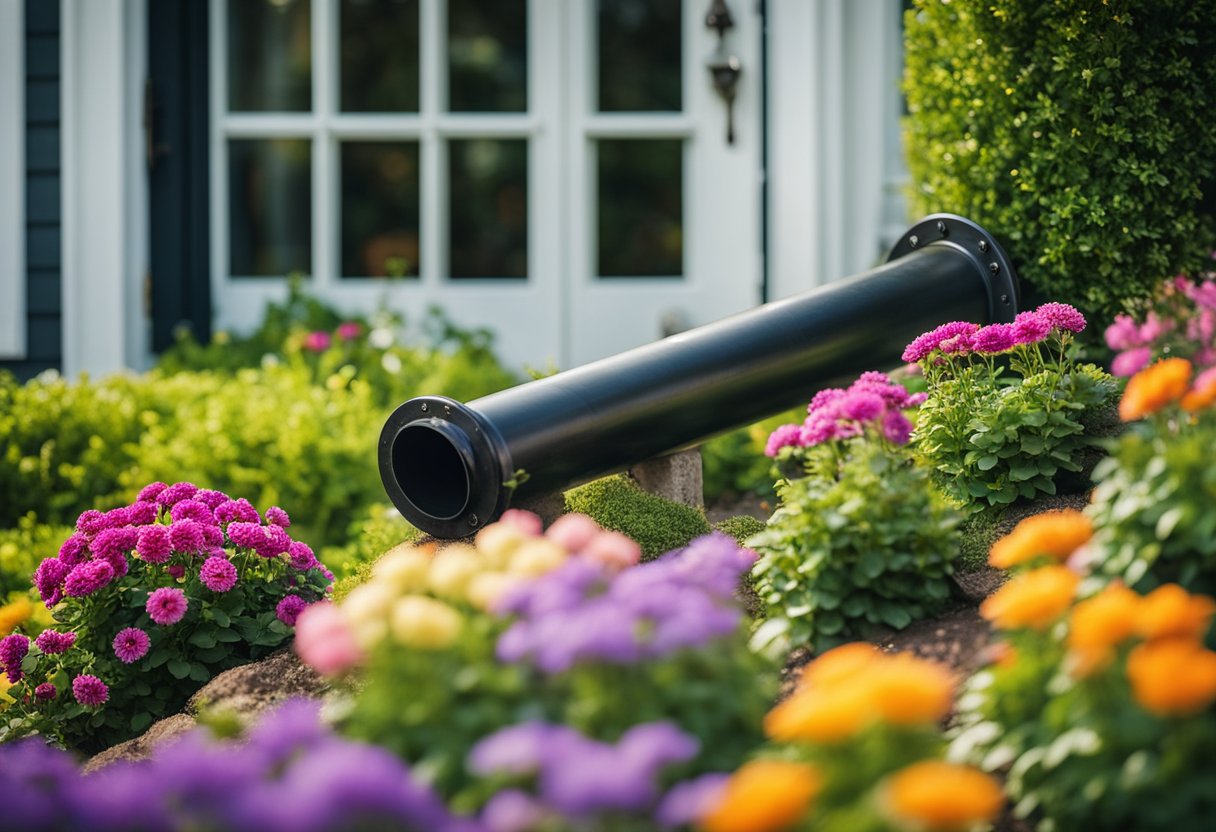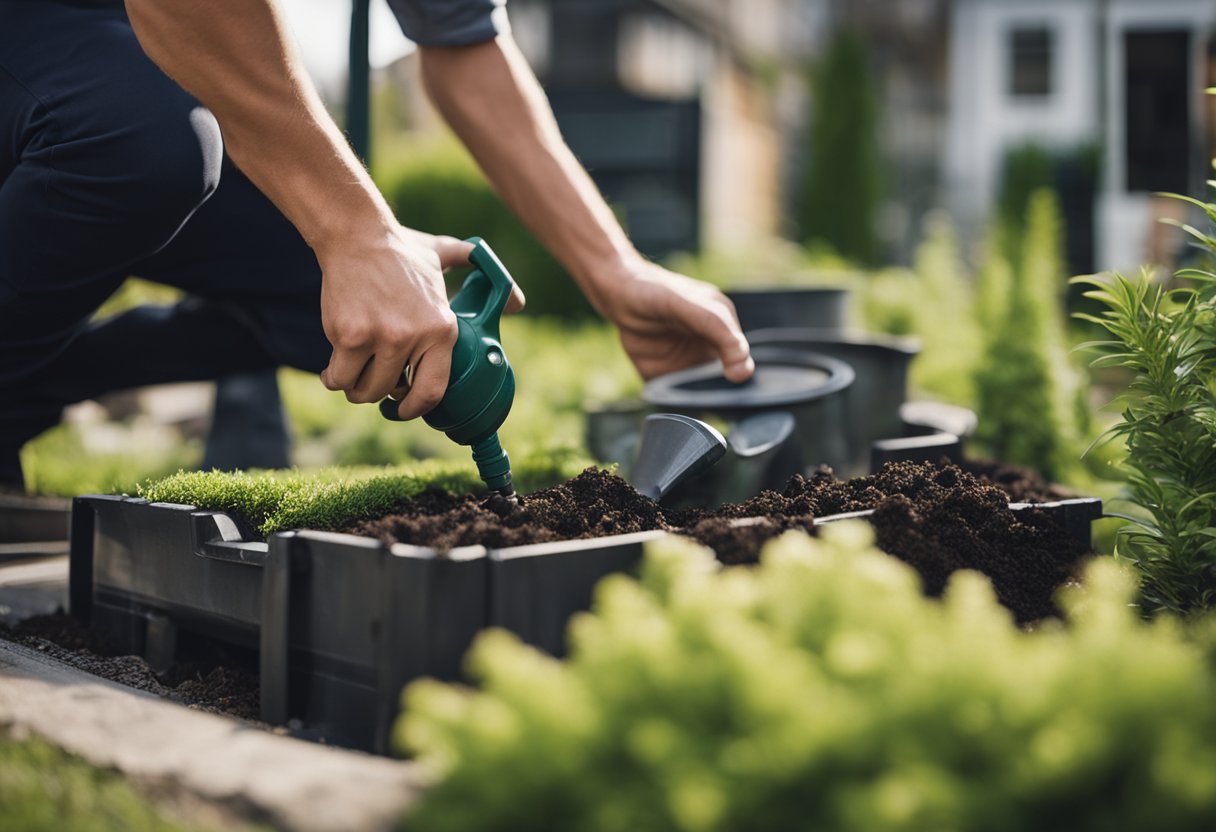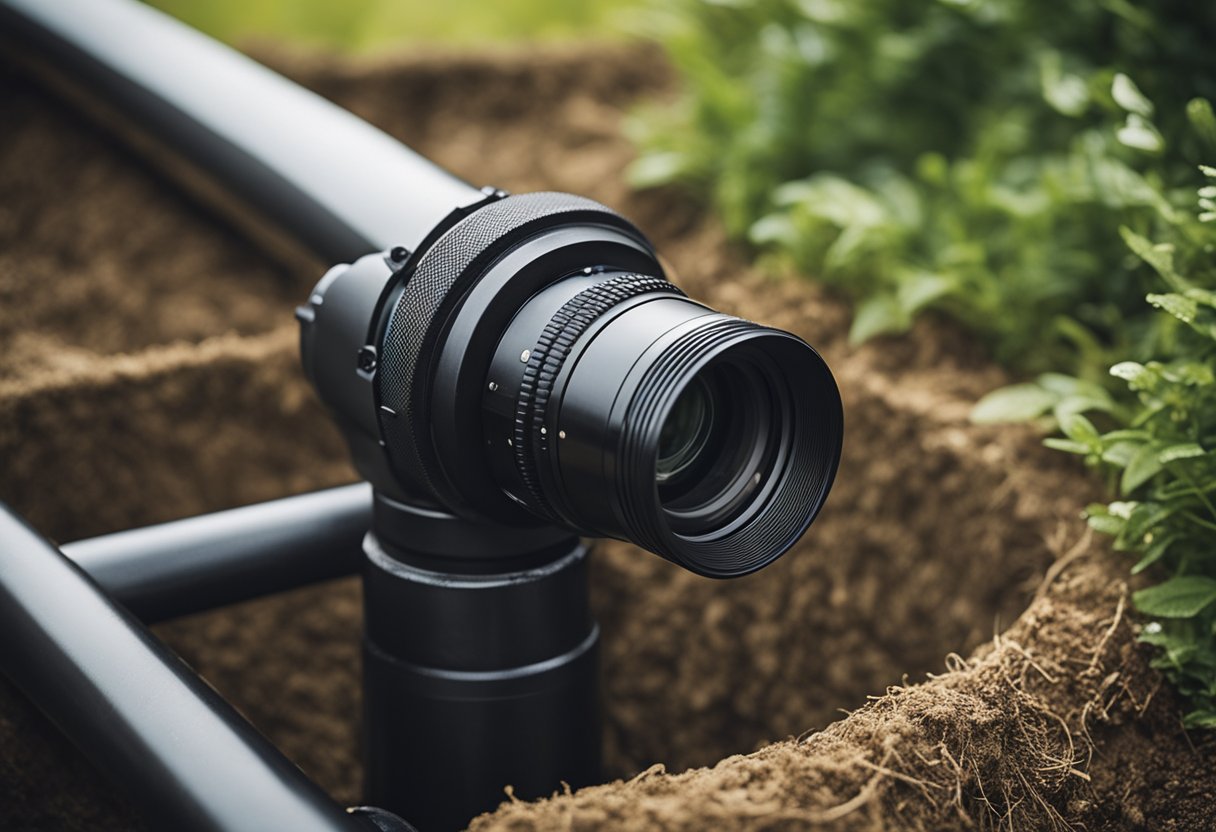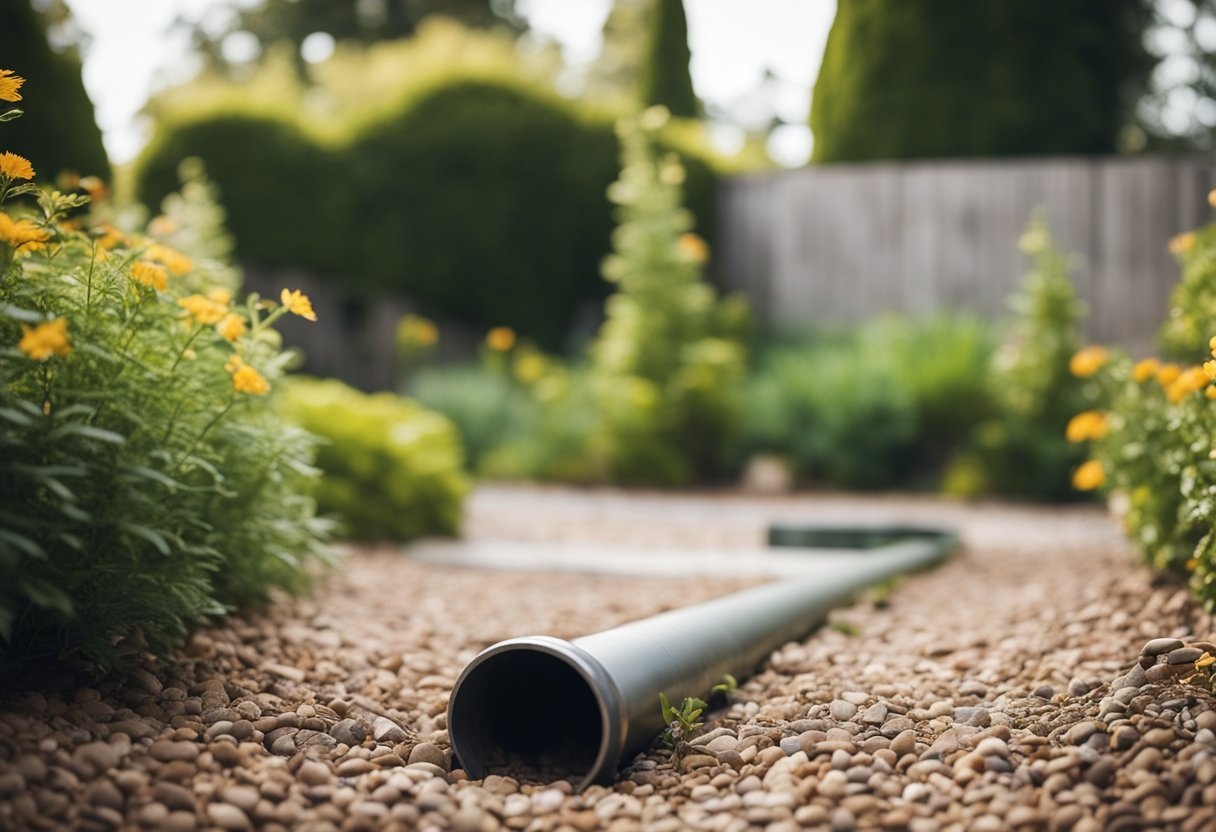As a homeowner, you want your yard to be beautiful and functional. However, sewer pipes can be an eyesore and detract from your landscaping efforts. Fortunately, there are several ways to hide sewer pipes in your yard without compromising their accessibility. In this article, I will share some tips and tricks for hiding sewer pipes in your yard, so you can enjoy a beautiful and functional outdoor space.
Understanding Sewer Pipes and Their Placement
Before you start hiding your sewer pipes, it’s important to understand their placement and function. Sewer pipes are typically located underground and connect your home’s plumbing system to the main sewer line. They are essential for removing wastewater from your home. However, their placement can make them difficult to hide. Sewer pipes are often located in the front yard, near the street, or in the backyard, near the house. Keep this in mind as you plan how to hide them.
Key Takeaways
- Understanding the placement and function of sewer pipes is essential before hiding them.
- Planning your yard around the sewer pipe can help you create an effective hiding solution.
- Incorporating plants, landscaping elements, paint, decorations, and focal points are all effective ways to hide sewer pipes while maintaining accessibility.
Understanding Sewer Pipes and Their Placement
https://www.youtube.com/watch?v=wx1lYDee6sA&embed=true
As a homeowner, understanding the basics of your plumbing system is essential. One key component of your plumbing system is the sewer pipe. Sewer pipes are responsible for transporting waste water from your home to the main sewer line.
Sewer pipes are generally made from materials such as PVC, cast iron, or clay. The type of material used will depend on the age of your home and the local building codes. PVC pipes are the most commonly used material for sewer pipes due to their durability and resistance to corrosion.
The placement of sewer pipes is also an important consideration. Sewer pipes are typically buried underground and run from your home to the street where they connect to the main sewer line. In some cases, sewer pipes may be located in a basement or crawl space.
It is important to note that sewer pipes can become damaged over time due to age, tree roots, or other factors. If you suspect that your sewer pipe is damaged, it is important to have it inspected by a professional plumber.
In addition to the sewer pipe, your plumbing system may also include drain pipes and a sewer line cleanout. Drain pipes carry waste water from sinks, toilets, and other fixtures to the sewer pipe. The sewer line cleanout is a capped pipe that provides access to the main sewer line for cleaning and maintenance purposes.
Overall, understanding the basics of your plumbing system, including the placement and function of your sewer pipe, is important for maintaining the health and safety of your home.
Planning Your Yard Around the Sewer Pipe
When it comes to hiding a sewer pipe in your yard, planning is key. You want to make sure that you are creating a yard that is both functional and beautiful, while also ensuring that the sewer pipe is hidden from view. Here are some tips to help you plan your yard around the sewer pipe.
Consider Your Yard’s Layout
Before you start planning your landscaping, take a good look at your yard’s layout. You want to make sure that your landscaping plan is functional and doesn’t interfere with the drainage system or sewage system. You also want to ensure that your irrigation system is not disrupted by the landscaping plan.
Identify the Access Point
Make sure that you know where the access point to the sewer pipe is located. This will help you plan your landscaping around the area and ensure that the access point is not obstructed. You also want to make sure that the access point is not a tripping hazard.
Choose the Right Landscaping Materials
When choosing landscaping materials, consider using plants that can help hide the sewer pipe. Medium-sized plants can obstruct the view while still allowing access to the cleanout. You can also use white gravel or mulch to help camouflage the cleanout. Placing a garden sculpture or feeders near the cleanout can also block the view from one direction.
Ensure Accessibility
While you want to hide the sewer pipe, you also want to ensure that it is easily accessible. Make sure that the landscaping plan does not obstruct access to the cleanout or other parts of the sewer pipe. You also want to make sure that the area around the sewer pipe is safe and free from tripping hazards.
By considering your yard’s layout, identifying the access point, choosing the right landscaping materials, and ensuring accessibility, you can create a beautiful and functional yard that also hides the sewer pipe from view.
Choosing the Right Materials to Hide the Sewer Pipe
As I have learned from my research, there are various materials that can be used to hide sewer pipes in the yard. The choice of materials will depend on the size and location of the pipe, as well as the overall aesthetics of the yard. Here are some of the most popular materials that can be used:
PVC Pipe Covers
PVC pipe covers are a popular option for hiding sewer pipes in the yard. These covers are made of durable PVC material and come in various sizes to fit different pipe diameters. PVC pipe covers are easy to install and can be painted to match the color of the surrounding landscape.
Wooden Box
A wooden box is another option for hiding sewer pipes in the yard. The box can be custom-made to fit the size of the pipe and can be painted or stained to match the color of the surrounding landscape. Wooden boxes are a great option for those who want a natural look in their yard.
Artificial Rock
Artificial rocks are a popular option for hiding sewer pipes in the yard. These rocks are made of durable materials and come in various sizes and colors to match the surrounding landscape. Artificial rocks are easy to install and can be used to cover large or small pipes.
Bricks
Bricks are a popular option for hiding sewer pipes in the yard. These bricks can be used to create a decorative wall around the pipe, or they can be used to create a pathway or patio. Bricks are a great option for those who want a classic, timeless look in their yard.
Concrete
Concrete is a durable option for hiding sewer pipes in the yard. Concrete can be used to create a decorative wall, pathway, or patio around the pipe. Concrete is a great option for those who want a modern, sleek look in their yard.
In conclusion, choosing the right materials to hide sewer pipes in the yard is important for maintaining the overall aesthetics of the landscape. PVC pipe covers, wooden boxes, artificial rocks, bricks, and concrete are some of the most popular materials that can be used. The choice of materials will depend on the size and location of the pipe, as well as the overall look and feel of the yard.
Incorporating Plants and Landscaping Elements
https://www.youtube.com/watch?v=ydnOGqtHkE4&embed=true
When it comes to hiding sewer pipes in your yard, incorporating plants and landscaping elements can be an effective solution. By doing so, you not only hide the unsightly pipes but also add visual interest to your yard.
One way to incorporate plants is to create a garden bed around the sewer pipe area. You can use medium-sized plants such as evergreen shrubs or ivy to create a natural barrier around the pipes. This not only hides the pipes but also adds a touch of greenery to your yard.
Another way to hide sewer pipes is to use mulch or gravel. You can use white gravel to create a clean and bright appearance. Adding a retaining wall around the area can also help to create a clean and organized look.
When choosing plants and landscaping elements, it is important to consider the appearance you want to achieve. For example, if you want a natural and wild look, you can use trees and bushes to create a dense cover. On the other hand, if you want a clean and modern look, using gravel and retaining walls can be a great option.
It is also important to consider the maintenance required for the plants and landscaping elements you choose. Make sure to choose plants that are easy to maintain and do not require a lot of watering or pruning. This will ensure that your yard looks great without requiring too much effort on your part.
Overall, incorporating plants and landscaping elements can be an effective way to hide sewer pipes in your yard. By choosing the right plants and elements, you can create a beautiful and functional space that you can enjoy for years to come.
Using Paint and Decorations to Camouflage the Sewer Pipe
https://www.youtube.com/watch?v=syhdVXUI-B4&embed=true
When it comes to hiding sewer pipes in your yard, painting and decorations can be an effective way to camouflage them. You can use paint to match the color of the pipe to the surrounding landscape or create a design that blends in with the environment. Spray paint is a great option for covering large areas quickly and easily.
Another way to hide the sewer pipe is to use decorations. Animal sculptures and garden gnomes are popular choices for disguising unsightly pipes. You can place them strategically around the pipe to draw attention away from it.
When choosing decorations, it’s important to consider the style of your yard. If you have a modern or minimalist garden, animal sculptures may not be the best choice. Instead, you could opt for sleek metal decorations or geometric shapes that complement the overall aesthetic.
It’s important to note that decorations should not obstruct access to the sewer pipe. If there is an emergency or maintenance issue, the pipe must be easily accessible. Make sure that any decorations are placed in a way that does not impede access to the pipe.
Overall, painting and decorations can be an effective way to hide sewer pipes in your yard. With a little creativity and planning, you can turn an unsightly pipe into a decorative element that blends seamlessly with your landscape.
Installing Focal Points to Divert Attention
When trying to hide a sewer pipe in your yard, one effective method is to install focal points that divert attention away from the pipe. Focal points are items that draw the eye and create visual interest in a landscape. They can be anything from garden sculptures and birdbaths to fake rocks and sculptures.
One popular option is to use a garden sculpture. A well-placed sculpture can add visual interest to your yard and distract from the unsightly sewer pipe. When choosing a sculpture, consider the size and style of your yard. A large, ornate sculpture might be overwhelming in a small yard, while a small, simple sculpture might get lost in a large yard.
Another option is to use a birdbath. A birdbath not only adds visual interest to your yard, but it also provides a source of water for birds. When choosing a birdbath, consider the size and style of your yard, as well as the types of birds that visit your yard.
Fake rocks are another option for hiding a sewer pipe. These rocks are made of lightweight materials and are designed to look like real rocks. They can be placed around the base of the pipe to create a natural-looking cover.
Sculptures are also a great option for hiding sewer pipes. A well-placed sculpture can add visual interest to your yard and distract from the unsightly pipe. When choosing a sculpture, consider the size and style of your yard. A large, ornate sculpture might be overwhelming in a small yard, while a small, simple sculpture might get lost in a large yard.
A rock garden is another option for hiding a sewer pipe. A rock garden is a low-maintenance landscaping option that features rocks of various sizes and shapes. These rocks can be placed around the base of the pipe to create a natural-looking cover. Consider adding a rosebush or two to the rock garden to add a pop of color.
In conclusion, installing focal points is an effective way to hide a sewer pipe in your yard. Garden sculptures, birdbaths, fake rocks, sculptures, rock gardens, and rosebushes are all great options for creating visual interest and distracting from the unsightly pipe. When choosing a focal point, consider the size and style of your yard, as well as the types of birds that visit your yard.
Maintaining Accessibility While Hiding the Sewer Pipe
https://www.youtube.com/watch?v=kuD3k6Av2zk&embed=true
As much as we want to hide the unsightly sewer pipe in our yard, we must ensure that we still have easy access to it in case of maintenance or repairs.
One way to maintain accessibility is by creating a garden bed with medium-sized plants around the sewer pipe while still leaving enough space to access the cleanout. This way, you can easily reach the cleanout without having to dig through the plants.
Another option is to camouflage the cleanout with white gravel or mulch. This not only hides the cleanout but also makes it easier to locate when needed.
It is important to avoid creating tripping hazards or obstructing access for future plumbing work. Therefore, ensure that the plants or decorative objects you use to hide the sewer pipe do not obstruct the path to the cleanout.
In case of an obstruction in the sewer pipe, it is crucial to have easy access to it. Plumbers may need to use a snake or other tools to clear the blockage. Therefore, ensure that the area around the sewer pipe is clear and easy to access.
By following these tips, you can maintain accessibility while still hiding the sewer pipe in your yard.
Addressing Potential Issues and Concerns
https://www.youtube.com/watch?v=KQl3Rssxcy0&embed=true
As with any landscaping project, hiding a sewer pipe in your yard comes with potential issues and concerns that you should be aware of to ensure a successful and safe outcome.
Pests
One concern when hiding a sewer pipe in your yard is the possibility of attracting pests. Certain materials used to cover the pipe, such as mulch or leaves, can attract insects and rodents. To avoid this, consider using materials that are less attractive to pests, such as decorative stones or artificial rock covers.
Thorns
Another issue to consider is the presence of thorny plants in your yard. If you plan to use plants to cover the sewer pipe, make sure to choose ones that are not thorny or prickly. This will prevent injury to yourself or anyone else who may need to access the pipe in the future.
Feeders
If you have bird feeders or other wildlife feeders in your yard, it’s important to consider their proximity to the sewer pipe. You don’t want to block access to the pipe or create a tripping hazard for anyone who may need to access it. Consider placing the feeders in a different area of your yard or using a decorative object to block the view of the pipe from one direction while still maintaining access.
By addressing these potential issues and concerns, you can ensure a successful and safe outcome when hiding a sewer pipe in your yard.
Frequently Asked Questions
What are some ideas for decorative sewer pipe covers?
Decorative sewer pipe covers can be a great way to hide unsightly pipes while adding a touch of style to your yard. Some popular options include using artificial rocks, creating a garden bed with medium-sized plants, or using decorative objects like garden sculptures or feeders to block the view from one direction. You can also paint the pipes or cover them with white gravel or mulch to camouflage them.
How can I hide a sewer cover in my yard?
There are several ways to hide a sewer cover in your yard. You can create a garden bed with medium-sized plants to hide the cover and still maintain access to it. You can also use decorative objects like garden sculptures or feeders to block the view from one direction. Another option is to paint the cover or cover it with white gravel or mulch to camouflage it.
What are some options for replacing a sewer cap?
If your sewer cap is damaged or needs to be replaced, there are several options available. You can purchase a replacement cap from a plumbing supply store or online retailer. You can also hire a professional plumber to replace the cap for you. Be sure to choose a cap that is the correct size and meets local building codes.
How can I landscape around a sewer cleanout?
Landscaping around a sewer cleanout can be tricky, as you need to maintain access to the cleanout while still hiding it from view. One option is to create a garden bed with medium-sized plants that can be easily moved if access is needed. Another option is to use decorative objects like garden sculptures or feeders to block the view from one direction. Be sure to avoid creating tripping hazards or obstructing access for future plumbing work.
What is the best way to bury a sewer pipe?
The best way to bury a sewer pipe is to follow local building codes and regulations. In general, sewer pipes should be buried at least 18 inches below ground and should have a slope of at least 1/4 inch per foot to ensure proper drainage. Be sure to use the correct type of pipe for your application and to have the installation inspected by a professional plumber.
How can I prevent roots from growing in my sewer lines?
Preventing roots from growing in your sewer lines can be challenging, but there are several steps you can take to minimize the risk. One option is to avoid planting trees or shrubs near your sewer lines. You can also have your sewer lines inspected and cleaned regularly by a professional plumber to remove any roots that may have started to grow. Additionally, you can use a root barrier product to prevent roots from growing into your sewer lines.

Hi, I’m Sal Muller of Tooltrip.com. My DIY experience led me to understand essential power tools for home projects. Tooltrip.com guides enthusiasts and professionals in choosing right tools for any job. I provide concise top tool reviews for easier, efficient DIY.






